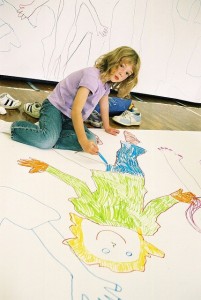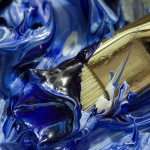I’ve purposefully returned to reading and commenting on blogs in recent months and I read two really good (and connected) blog posts this weekend. I first read My Own Watershed Moments on Chris Kennedy’s blog Culture of Yes which led to me to Dean Shareski’s post, Watershed Moments of Learning, on Ideas and Thoughts. At the end of his post, Dean Shareski invited his network to write about their own watershed moments of learning. That challenge was the inspiration for Chris Kennedy’s post and, in turn, they both prompted me to spend some time thinking and writing about my own watershed moments.
This task, which initially seemed pretty easy, was, in retrospect, not as straightforward as I expected and turned out to be a good exercise in thinking and ranking. I’m guessing that this list will change with time so think of this as a snapshot of my ideas at this point in my life. I decided to organize my ideas using most of the same categories as Dean and Chris: PD Event/Conference, speaker or presentation, book, tool, and person.
PD Event/Conference:
TEDx West Vancouver ED (2013) is my watershed PD event because it is one of the PD events I’ve attended in the last few years that continues to standout in my mind. It was my first (and so far only) TEDx, the first TEDx West Vancouver Ed, and one of those PD events where you finally get to meet all sorts of people in your PLN face to face (many for the first time – it was the first and only time I’ve ever had the chance to talk to Dean Shareski!). I loved the event. It reminded me that I became the educator I am because I left my small little town and ventured out to PD beyond. It inspired me in so many ways – the speakers were absolutely incredible (see the youtube videos here). It also, indirectly, reminded me that I learn best through arts based methods. At the time I had been tweeting at conferences to record and share professional learning but for whatever reason (serendipity I think), my devices were not connecting to the wifi that whole weekend so I switched to my default, old-school method – a sketchbook and colored, dry media. My doodles from that day, and a bit more of an explanation, are here.
Speaker(s)/Presentation(s):
Choosing just one speaker or presentation is super tough. For today though, I’m going to pick Helen Keegan as my watershed speaker. Her presentation on gamification at Edmedia in Victoria a few years ago dramatically changed my thinking. She introduced me to gamification and I’ve since become fascinated by this. Because of Helen, I co-created and taught one of the coolest units I’ve ever used with students last year – the Battle of the Books: Canadian Authors. That unit is a new twist on online literature circles that uses gamification as the method through which to engage kids and trick them into loving reading novels. I also have to give credit to Justin deVries and Mike Koppes from Kamloops for their awesome workshop that deepened my understanding of gamification at the PITA conference last fall. I’m still fascinated with gamification and plan to continue learning more about how to use this as one method to engage kids.
Book(s):
I love to read and I read a lot. To have to pick just one book, ever, to answer a question that starts with “Which book…” usually seems like an impossible task to me. So, accordingly, I decided on my top four watershed books as of right this minute, today:
#1: The Arts and the Creation of Mind by Elliot Eisner – This book was recommended to me by Dr. Vicki Kelly (see my watershed person below) when I was writing my thesis. When I started reading this book, I couldn’t believe that there was a book, written by a famous Stanford professor, that summed up everything I believed as an arts educator in such an articulate, academic way. It blew my mind. It still blows my mind. I’d been teaching a certain way and developing certain pedagogical beliefs during my years as a high school visual arts teacher (that transform my practice to this day). This book fit perfectly within, and gave sound theoretical basis to, all that I had learned, experienced and struggled with as a teacher passionate about arts based methods and the integration of the visual arts into students’ learning.
#2: Look to the Mountain by Gregory Cajete – This book was also recommended to me by Vicki when I was writing my thesis. It was the first book I ever read that actually described my mother’s way of teaching. You’d have to read my thesis or sit and chat with me for the complete explanation about that. My great-grandmother raised my mother (and my siblings and I) and my great-grandmother, in turn, was raised by her Cree grandmother. Essentially, my great-grandmother’s and my mother’s pedagogy and child-rearing philosophies were rooted in indigenous ways of learning and knowing. I can’t tell you how much it meant to me to read a book that actually described how my mom taught me to teach and to be with kids as a teacher. I think it will forever be one of my favourite non-fiction books for that reason.
#3: The World is Flat by Thomas Friedman – This is the same book mentioned by Chris Kennedy in his watershed post. In 2005, when this book was first published, I was starting my graduate coursework, learning about the emerging online tools, and attempting to wrap my head around the impact of what was taking place in the field of education because of the internet and the world wide web. This book really helped me to understand the changes happening at the time and pushed me to think about where learning in schools and the world in general was heading.
#4: An Imaginative Approach to Teaching by Kieran Egan – I really like reading books by Kieran Egan and I’ve admired and followed his work for a long time now. Several times when reading this book I would read a chapter at night and try out strategies the next day with my students. Many of those strategies are firmly embedded into my teaching practice. Because of this book, I often weave storytelling into my lessons and kids always seem to respond well. I once saw Kieran Egan when I was completing my MEd. He was working in a garden outside of the education faculty at SFU. I was starstruck and too shy to go say hello. I kick myself for that to this day. He looked so peaceful though, working away, surrounded by plants and I respected him and his peace too much to intrude at the time.
Tool:
The watershed tool would have to be Twitter. It’s been interesting to experience the evolution of this tool since I created my account in 2009. I enjoy spending time learning with and from other enthusiastic educators who love teaching and working with kids and Twitter allows me to do that with people all over the world from a small, rural town in the interior of BC. I can dip in to talk or comment whenever I feel like it and rarely does a day go by that I don’t check my feed to see what’s happening in the world. Of all the technology I’ve tried and use, I think that Twitter has transformed professional learning for me (one example of how in this post here) more than anything else. Even with the changes that seemed to have come with the explosion of people using it in recent years, Twitter continues to be the tool that impacts my practice the most.
Person:
My watershed person, and someone who definitely had a profound impact on my thinking, teaching, personal life, and everything, really, is Dr. Vicki Kelly. She is one of the most important teachers of my life. Vicki was one of my professors during my Masters year at SFU in 2010-2011. I don’t think there’s any way that I could explain how much I learned from/with her and through her teaching. She is an expert teacher and one of the most brilliant people I’ve ever met. She helped me in a way that I don’t think any other professor could have. especially when it came to my learning about traditional Métis and Cree beliefs surrounding education and child-rearing. And it’s no small coincidence that two of my watershed books above were recommended by her.
Those are my watershed moments. Thanks to Dean and Chris for the inspiration and thanks for reading!


 The blogs I read fall into one of three categories. Blogs in the first category are those related to using technology in the field of education, such as
The blogs I read fall into one of three categories. Blogs in the first category are those related to using technology in the field of education, such as